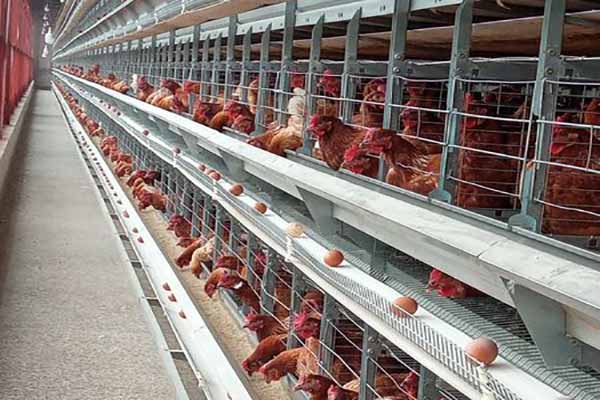Automatic Feeding Systems for Poultry Cages: Enhancing Efficiency and Productivity
Time : 2025-06-26
Automatic feeding systems have revolutionized the poultry industry, offering a more efficient and productive way to manage poultry cages. This article delves into the intricacies of these systems, highlighting their importance, benefits, and the latest advancements in technology.
Introduction to Automatic Feeding Systems
Automatic feeding systems are designed to dispense feed to poultry cages at predetermined intervals. These systems are a significant advancement over traditional manual feeding methods, which are time-consuming and prone to errors. The integration of automated feeding systems into poultry farming has led to improved animal welfare, increased productivity, and reduced labor costs.
Key Components of Automatic Feeding Systems
An automatic feeding system for poultry cages typically consists of the following components:
- Feeding Unit: This is the core of the system, responsible for dispensing feed. It can be a belt feeder, chain feeder, or a drum feeder, depending on the type of poultry and the layout of the cage.
- Control Unit: The control unit manages the feeding process. It can be a simple timer or a sophisticated computer system that adjusts feeding rates based on various factors such as the age, weight, and health of the birds.
- Storage System: This component stores the feed and ensures a continuous supply to the feeding unit. It can be a bulk bin, silo, or a hopper.
- Monitoring and Data Collection: Modern systems often include sensors and software that monitor feed consumption, bird behavior, and environmental conditions. This data is crucial for optimizing feeding strategies and maintaining optimal bird health.
Benefits of Automatic Feeding Systems
The adoption of automatic feeding systems in poultry cages offers several benefits:
Improved Efficiency
Automatic feeding systems eliminate the need for manual feeding, saving time and labor. This allows farmers to focus on other critical tasks, such as monitoring bird health and ensuring optimal living conditions.
Consistency in Feed Ration
These systems ensure that each bird receives the correct amount of feed at the right time, reducing the risk of overfeeding or underfeeding. Consistent feed rations contribute to better growth rates and overall bird health.
Reduction in Waste
Automatic feeding systems can be programmed to adjust feed delivery based on the birds’ actual consumption, minimizing waste and reducing costs.
Enhanced Animal Welfare
Regular and consistent feed delivery helps maintain the health and well-being of the birds. It also reduces the stress associated with manual feeding, which can be a source of discomfort for the animals.
Latest Advancements in Automatic Feeding Systems
The poultry industry is continuously evolving, and so are the automatic feeding systems. Some of the latest advancements include:
Smart Feeding Technology
Smart feeding technology uses sensors and algorithms to adjust feed delivery based on real-time data. This technology can optimize feed rations for individual birds, leading to improved growth rates and better health outcomes.
Remote Monitoring and Control
With the advent of the Internet of Things (IoT), poultry farmers can now monitor and control their feeding systems remotely. This allows for timely adjustments and ensures that the systems are always functioning optimally.
Integration with Other Farming Technologies
Modern automatic feeding systems can be integrated with other farming technologies, such as climate control systems and water management systems. This integration leads to a more holistic approach to poultry farming, resulting in improved efficiency and productivity.
Conclusion
Automatic feeding systems for poultry cages have become an essential tool for modern poultry farming. By improving efficiency, reducing waste, and enhancing animal welfare, these systems play a crucial role in the success of poultry operations. As technology continues to advance, we can expect even more sophisticated and intelligent feeding systems to hit the market, further transforming the poultry industry.












